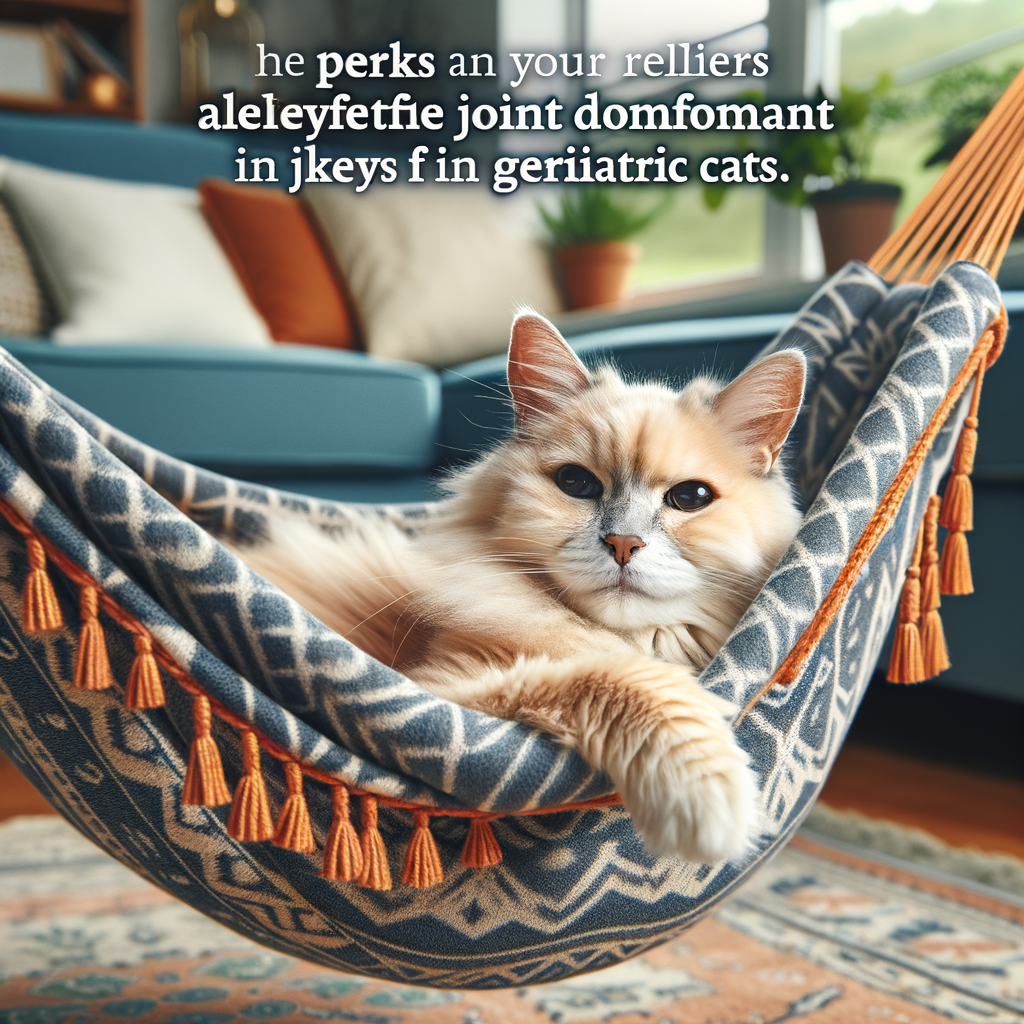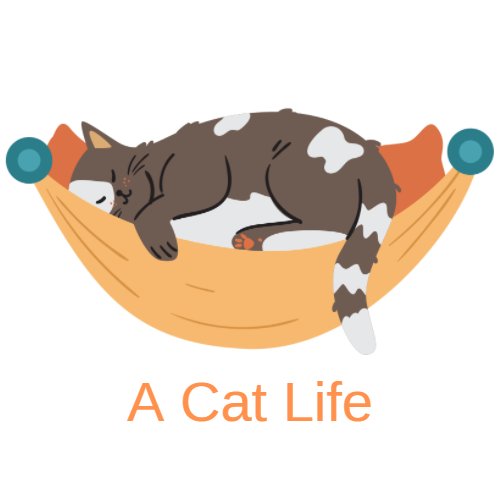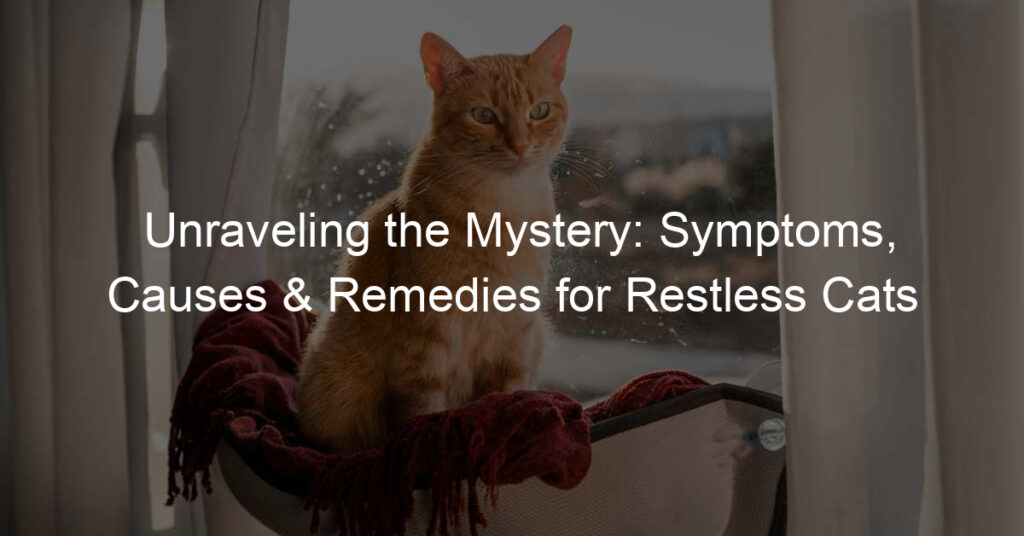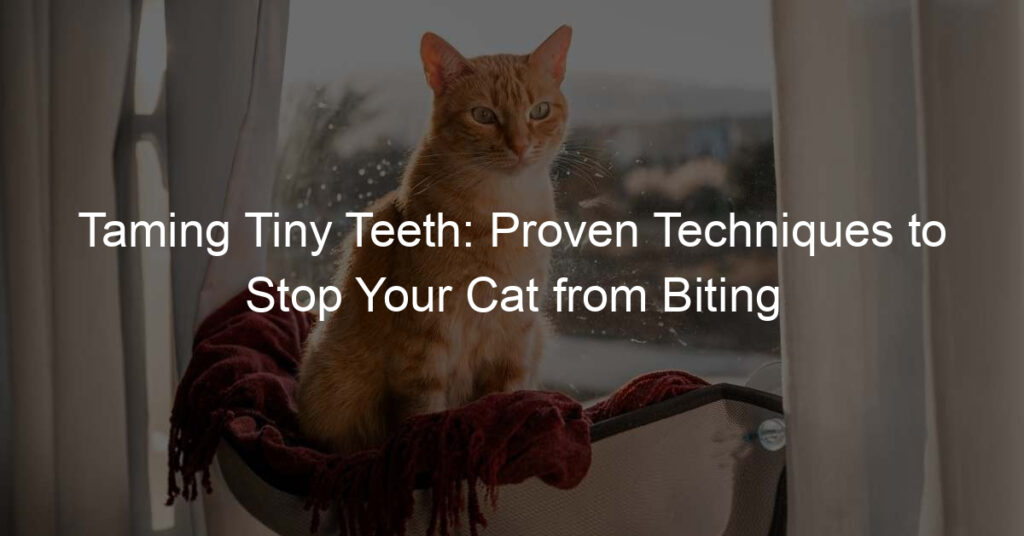
Introduction: The Issue of Joint Pain in Aging Cats
As our beloved feline friends age, they may start to experience health issues that were not present in their younger years. One of the most common health problems that older cats face is joint pain. This can significantly impact their quality of life, making it essential for cat owners to understand this issue, recognize its symptoms, and know how to maintain their cat’s joint health.
- Understanding joint issues in older cats
- Common symptoms of joint pain in cats
- Importance of maintaining cat joint health
Joint issues in older cats are often a result of wear and tear over the years. Just like in humans, a cat’s joints can become less flexible and more prone to inflammation and pain as they age. This condition is known as arthritis, and it’s estimated that up to 90% of cats over the age of 12 suffer from some form of this disease. It’s crucial to understand that while joint issues are common in older cats, they are not an inevitable part of aging and can be managed with proper care and attention.
Recognizing the symptoms of joint pain in cats can be challenging as they often hide their discomfort. However, some common signs include a decrease in activity levels, difficulty jumping or climbing, limping, changes in grooming habits, and changes in behavior such as increased aggression or withdrawal. If you notice any of these symptoms in your cat, it’s essential to consult with a veterinarian for a proper diagnosis and treatment plan.
Maintaining your cat’s joint health is vital for their overall well-being and quality of life. Proper joint health can help your cat stay active and comfortable in their golden years. This involves regular vet check-ups, a balanced diet, maintaining a healthy weight, and providing them with a comfortable living environment. Remember, a healthy cat is a happy cat!
In the following sections, we will delve deeper into the topic of joint health in aging cats, exploring the benefits of cat hammock beds, how they can be particularly beneficial for older cats, and additional tips for maintaining your cat’s joint health.
What Are Cat Hammock Beds?
A cat hammock bed is a unique type of pet furniture that is gaining popularity among cat owners. But what exactly is it? Let’s dive in and explore.
- Definition and description of cat hammock beds
- Types of hammock beds for cats
- Free-standing hammock beds: These are standalone units that come with their own frame. They are typically larger and can accommodate multiple cats.
- Wall-mounted hammock beds: These hammocks attach directly to the wall, saving floor space. They are great for small apartments or homes with limited space.
- Cat tree hammock beds: These hammocks are designed to fit into a cat tree, providing an elevated spot for your cat to rest.
- Why cat hammock beds are becoming popular
A cat hammock bed is a suspended bed designed specifically for cats. It is typically made of sturdy fabric or mesh, stretched between two or more points, creating a comfortable and cozy spot for your feline friend to rest and relax. The design of a cat hammock bed allows it to sway slightly, mimicking the motion of a real hammock. This gentle rocking can be very soothing for cats, making it a favorite resting spot.
There are several types of cat hammock beds available in the market. Some are standalone units, while others are designed to attach to a wall or fit into a cat tree. Here are a few types:
Cat hammock beds are becoming increasingly popular for several reasons. Firstly, they provide a comfortable and cozy spot for cats to rest and relax. The gentle rocking motion can be very soothing for cats, and many cats prefer the elevated position, which allows them to keep an eye on their surroundings. Secondly, cat hammock beds are space-saving. Especially the wall-mounted and cat tree hammock beds, they do not take up floor space, making them a great choice for small homes or apartments. Lastly, cat hammock beds are often considered more hygienic as they are easy to clean and do not accumulate as much dust and hair as traditional cat beds.
Benefits of Cat Hammock Beds
As a cat owner, you may have noticed that your feline friend loves to sleep in high places. This is where cat hammock beds come in handy. Not only do they provide a comfortable and elevated place for your cat to rest, but they also offer significant health benefits, particularly for cats suffering from joint issues.
Cat Hammock Bed Benefits for Joint Health
One of the key benefits of cat hammock beds is their positive impact on joint health. Let’s delve into this in more detail.
- How hammock beds alleviate joint pain
- Case study: Improvement in an older cat’s joint issues after using a hammock bed
Cat hammock beds are designed to cradle your cat’s body, providing support and reducing pressure on their joints. This is particularly beneficial for older cats or those suffering from arthritis. The gentle rocking motion of the hammock can also soothe discomfort and promote relaxation.
Consider the case of Whiskers, a 12-year-old cat suffering from arthritis. Whiskers’ owner noticed that he was having difficulty climbing onto his usual sleeping spots and seemed to be in pain. After switching to a hammock bed, Whiskers was able to rest comfortably without putting strain on his joints. Within a few weeks, Whiskers was more active and showed signs of reduced discomfort.
In conclusion, a cat hammock bed can be a great investment for your feline friend’s health and comfort. Not only does it provide a cozy place for them to rest, but it can also alleviate joint pain and improve their quality of life.
Other Benefits of Cat Hammock Beds
Beyond the significant impact on joint health, cat hammock beds also offer a range of other benefits. These advantages contribute to the overall well-being of your feline friend, making the hammock bed a fantastic investment for any cat owner.
- Comfort and Relaxation Benefits
- Improved Sleep Quality
- Increased Sense of Security
Cat hammock beds are designed to cradle your cat’s body, providing a level of comfort that traditional flat beds simply can’t match. The hammock’s design allows your cat to sink into a cozy, snug position, promoting relaxation. This comfort can be particularly beneficial during stressful situations, such as thunderstorms or visits from unfamiliar people.
With the added comfort and relaxation provided by the hammock bed, your cat is likely to experience improved sleep quality. Good sleep is essential for your cat’s health, contributing to a stronger immune system, better mood, and increased energy levels. A study conducted by the Journal of Feline Medicine and Surgery found that cats who sleep well are less likely to develop behavioral problems.
Many cats enjoy the elevated position of a hammock bed, as it gives them a vantage point to observe their surroundings. This can increase their sense of security and reduce stress. According to the American Association of Feline Practitioners, cats who feel secure in their environment are less likely to exhibit destructive behaviors, such as scratching furniture or marking territory.
In conclusion, a cat hammock bed offers more than just relief for joint pain. It provides comfort, improves sleep quality, and increases a sense of security, contributing to the overall health and happiness of your cat.
Cat Hammock Beds for Older Cats
As our beloved feline friends age, their needs change. One of those needs is a comfortable place to rest and sleep. Cat hammock beds can provide the perfect solution for older cats. Let’s explore why.
- Why hammock beds are particularly beneficial for older cats
- Choosing the right hammock bed for your older cat
- Key takeaways: Hammock beds and older cats
Older cats often suffer from joint pain and arthritis. A hammock bed provides a soft, supportive surface that can help alleviate these issues. The elevated design of a hammock bed also helps to maintain a consistent temperature, keeping your cat warm and comfortable.
When choosing a hammock bed for your older cat, consider factors such as size, material, and ease of cleaning. Your cat’s bed should be large enough for them to stretch out comfortably, but not so large that they feel insecure. The material should be soft and warm, but also durable and easy to clean. Look for a hammock bed with a removable cover that can be machine washed.
Hammock beds offer a range of benefits for older cats. They provide a comfortable, supportive place for your cat to rest, helping to alleviate joint pain and arthritis. They also maintain a consistent temperature, keeping your cat warm and comfortable. When choosing a hammock bed, consider factors such as size, material, and ease of cleaning.
In conclusion, a hammock bed can be a great investment for your older cat’s comfort and health. Remember, your cat’s needs may change as they age, so it’s important to regularly reassess their bedding situation. A hammock bed can be a great way to ensure your cat’s golden years are as comfortable as possible.
Conclusion: Hammock Beds and Cat Joint Issues
In this article, we’ve explored the issue of joint pain in aging cats and how cat hammock beds can be a beneficial solution. Now, let’s summarize the key points and provide some recommendations for cat owners considering a hammock bed.
- Summary of how hammock beds can help with cat joint issues
- Recommendations for cat owners considering a hammock bed
As cats age, they may experience joint issues which can affect their comfort and mobility. Hammock beds can provide a solution to this problem. These beds are designed to cradle a cat’s body, distributing their weight evenly and reducing pressure on their joints. This can help alleviate pain and discomfort, and improve their quality of life.
If you’re considering a hammock bed for your feline friend, there are a few things to keep in mind. First, ensure the bed is the right size for your cat – it should be large enough for them to stretch out comfortably, but not so large that they feel insecure. Second, choose a bed with a sturdy frame and durable fabric to ensure it can support your cat’s weight. Finally, place the bed in a quiet, comfortable spot where your cat can relax undisturbed.
In conclusion, cat hammock beds can be a great investment for your pet’s health and comfort, particularly if they are dealing with joint issues. Remember, every cat is unique, and what works for one may not work for another. It’s always best to consult with your vet before making any major changes to your cat’s routine or environment.
| Benefits of Cat Hammock Beds | Recommendations for Choosing a Hammock Bed |
|---|---|
| Alleviates joint pain and discomfort | Ensure the bed is the right size for your cat |
| Improves quality of life | Choose a bed with a sturdy frame and durable fabric |
| Provides a comfortable and secure resting place | Place the bed in a quiet, comfortable spot |
Additional Tips for Maintaining Your Cat’s Joint Health
Aside from the use of cat hammock beds, there are other ways to help maintain your cat’s joint health. Here are some additional tips that can be beneficial:
- Diet and Nutrition Tips
What your cat eats plays a significant role in its overall health, including its joints. A balanced diet rich in essential nutrients like Omega-3 fatty acids can help support joint health. These nutrients are found in fish like salmon and mackerel. However, it’s important to remember that cats have specific dietary needs, so it’s best to consult with a vet before making any major changes to their diet.
- Importance of Regular Vet Check-ups
Regular vet check-ups are crucial for early detection of any potential joint issues. Your vet can assess your cat’s joint health and recommend appropriate treatments or preventive measures. They can also provide advice on weight management, as excess weight can put additional strain on your cat’s joints.
- Exercises and Activities for Older Cats
Exercise is important for maintaining your cat’s joint health. However, as cats age, they may become less active and more prone to joint issues. Therefore, it’s important to encourage gentle exercises that won’t strain their joints. Activities like slow-paced play, short walks, or climbing on a cat tree can be beneficial. Remember, it’s important to keep these activities fun and stress-free for your cat.
By following these tips, you can help ensure your cat’s joints stay healthy for as long as possible. Remember, every cat is unique, so it’s important to tailor these tips to your cat’s specific needs and preferences.








